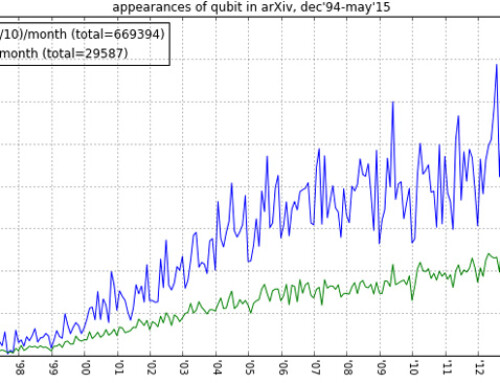Curating a blog like this one and writing about imaginary stuff like Fermat’s Lost Theorem means that you get the occasional comment of the form: I have a really short proof of a famous open problem in math. Can you check it for me? Usually, the answer is no. But, about a week ago, a reader of the blog that had caught an omission in a proof contained within one of my previous posts, asked me to do just that: Check out a short proof of Beal’s Conjecture. Many of you probably haven’t heard of billionaire Mr. Beal and his $1,000,000 conjecture, so here it is:
Let $latex a,b,c$ and $latex x,y,z > 2$ be positive integers satisfying $latex a^x+b^y=c^z$. Then, $latex gcd(a,b,c) > 1$; that is, the numbers $latex a,b,c$ have a common factor.
After reading the “short proof” of the conjecture, I realized that this was a pretty cool conjecture! Also, the short proof was wrong, though the ideas within were non-trivial. But, partial progress had been made by others, so I thought I would take a crack at it on the 10 hour flight from Athens to Philadelphia. In particular, I convinced myself that if I could prove the conjecture for all even exponents $latex x,y,z$, then I could claim half the prize. Well, I didn’t quite get there, but I made some progress using knowledge found in these two blog posts: Redemption: Part I and Fermat’s Lost Theorem. In particular, one can show that the conjecture holds true for $latex x=y=2n$ and $latex z = 2k$, for $latex n ge 3, k ge 1$. Moreover, the general case of even exponents can be reduced to the case of $latex x=y=p ge 3$ and $latex y=z=q ge 3$, for $latex p,q$ primes. Which makes one wonder if the general case has a similar reduction, where two of the three exponents can be assumed equal.
The proof is pretty trivial, since most of the heavy lifting is done by Fermat’s Last Theorem (which itself has a rather elegant, short proof I wanted to post in the margins – alas, WordPress has a no-writing-on-margins policy). Moreover, it turns out that the general case of even exponents follows from a combination of results obtained by others over the past two decades (see the Partial Results section of the Wikipedia article on the conjecture linked above – in particular, the (n,n,2) case). So why am I even bothering to write about my efforts? Because it’s math! And math equals magic. Also, in case this proof is not known and in the off chance that some of the ideas can be used in the general case. Okay, here we go…
Proof. The idea is to assume that the numbers $latex a,b,c$ have no common factor and then reach a contradiction. We begin by noting that $latex a^{2m}+b^{2n}=c^{2k}$ is equivalent to $latex (a^m)^2+(b^n)^2=(c^k)^2$. In other words, the triplet $latex (a^m,b^n,c^k)$ is a Pythagorean triple (sides of a right triangle), so we must have $latex a^m=2rs, b^n=r^2-s^2, c^k =r^2+s^2$, for some positive integers $latex r,s$ with no common factors (otherwise, our assumption that $latex a,b,c$ have no common factor would be violated). There are two cases to consider now:
Case I: $latex r$ is even. This implies that $latex 2r=a_0^m$ and $latex s=a_1^m$, where $latex a=a_0cdot a_1$ and $latex a_0,a_1$ have no factors in common. Moreover, since $latex b^n=r^2-s^2=(r+s)(r-s)$ and $latex r,s$ have no common factors, then $latex r+s,r-s$ have no common factors either (why?) Hence, $latex r+s = b_0^n, r-s=b_1^n$, where $latex b=b_0cdot b_1$ and $latex b_0,b_1$ have no factors in common. But, $latex a_0^m = 2r = (r+s)+(r-s)=b_0^n+b_1^n$, implying that $latex a_0^m=b_0^n+b_1^n$, where $latex b_0,b_1,a_0$ have no common factors.
Case II: $latex s$ is even. This implies that $latex 2s=a_1^m$ and $latex r=a_0^m$, where $latex a=a_0cdot a_1$ and $latex a_0,a_1$ have no factors in common. As in Case I, $latex r+s = b_0^n, r-s=b_1^n$, where $latex b=b_0cdot b_1$ and $latex b_0,b_1$ have no factors in common. But, $latex a_1^m = 2s = (r+s)-(r-s)=b_0^n-b_1^n$, implying that $latex a_1^m+b_1^n=b_0^n$, where $latex b_0,b_1,a_1$ have no common factors.
We have shown, then, that if Beal’s conjecture holds for the exponents $latex (x,y,z)=(n,n,m)$ and $latex (x,y,z)=(m,n,n)$, then it holds for $latex (x,y,z)=(2m,2n,2k)$, for arbitrary $latex k ge 1$. As it turns out, when $latex m=n$, Beal’s conjecture becomes Fermat’s Last Theorem, implying that the conjecture holds for all exponents $latex (x,y,z)=(2n,2n,2k)$, with $latex nge 3$ and $latex kge 1$.
Open Problem: Are there any solutions to $latex a^p+b^p= ccdot (a+b)^q$, for $latex a,b,c$ positive integers and primes $latex p,qge 3$?
PS: If you find a mistake in the proof above, please let everyone know in the comments. I would really appreciate it!


